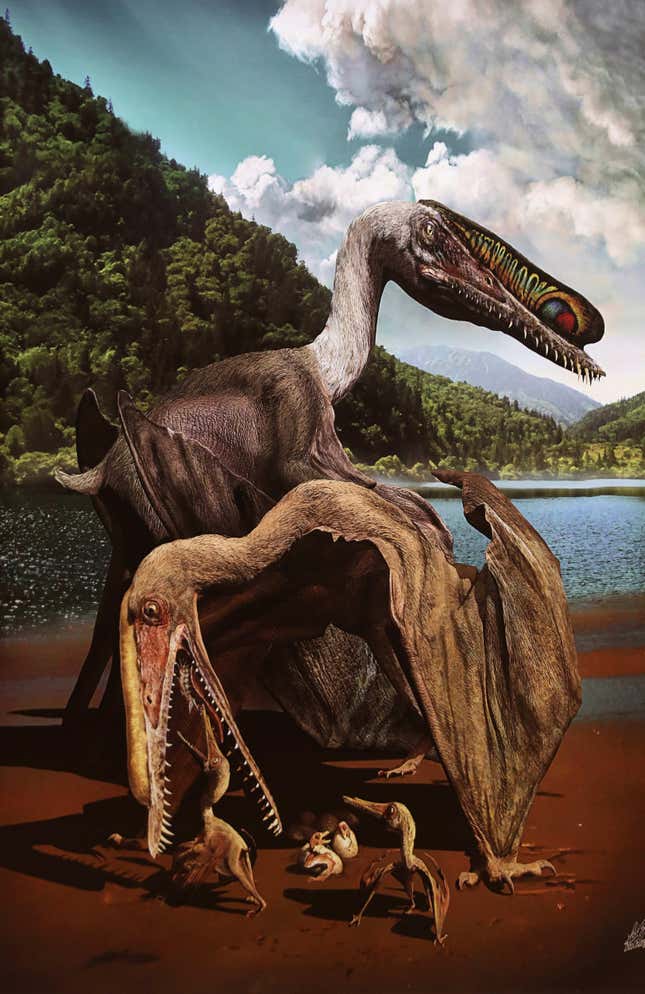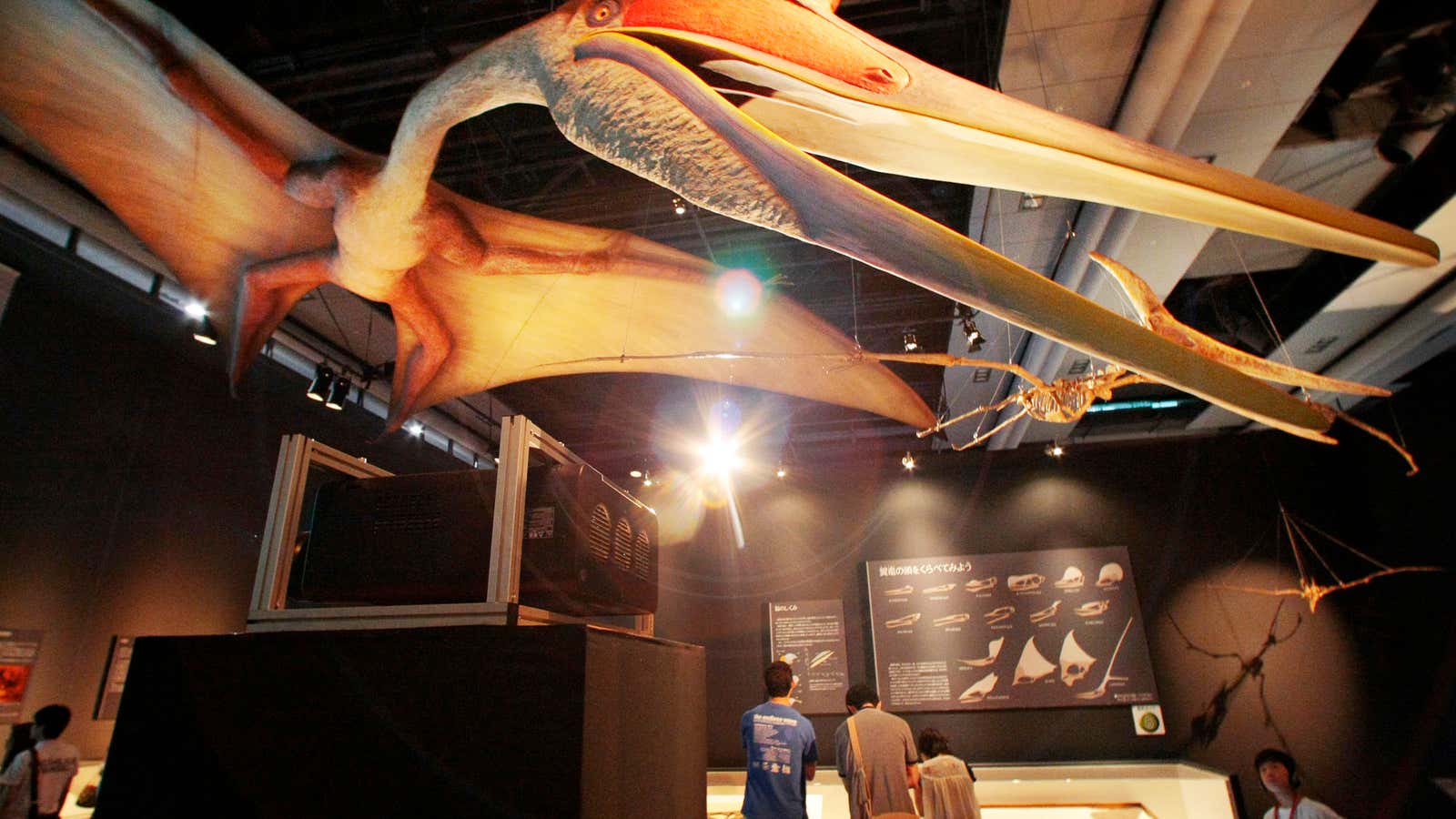Scientists have unearthed a massive trove of fossilized eggs and remains in China—giving us a peek into the life and death of a giant flying creature that lived tens of millions of years ago.
A group of Chinese and Brazilian paleontologists announced that they had identified 215 well-preserved eggs from pterosaurs, the earth’s first flying reptiles, in a basin of China’s northwestern Xinjiang region. Their findings, which filled in the nearly-blank page of understanding of the species, were published in the journal Science on Dec. 1. Paleontologist Shunxing Jiang, a member of the team, told the Guardian that the scientists want to call the region “Petrosaur Eden.”

Pterosaurs varied in size. While some were as big as crop dusters, others could be as small as sparrows, noted The Verge. The newly discovered fossils came from a species called Hamipterus tianshanensis, which had a wingspan of 11-feet and a long jaw filled with pointy teeth. Pterosaurs had thin bones, one of the traits contributing to their flying abilities, so finding remains is challenging, not to mention eggs—only six three-dimensional preserved eggs from China and Argentina had been found earlier, according to the study.
By studying the unearthed fossilized eggs, including 16 that contained embryonic remains, scientists were able to develop some theories about different developmental stages of the flying creature. For example, newborns were likely not able to fly yet, because of the lack of a wing muscle-related element in some of the embryos. These newborns might have needed some parental care, noted the researchers. However pterosaur specialist David Unwin, of the University of Leicester, argues instead that these embryos might be mid-term, meaning not yet ready to hatch.
The researchers also hypothesize that Hamipterus were gregarious animals, although no nests were found. The large number of eggs appear to have been laid by different females, suggestive of nesting in colonies. But the high concentration of eggs in the basin and their position suggested that something else might also be at play—such as rough weather passing over a nesting site. A flood might have carried the eggs into a nearby lake where they piled up and fossilized, the researchers said.
